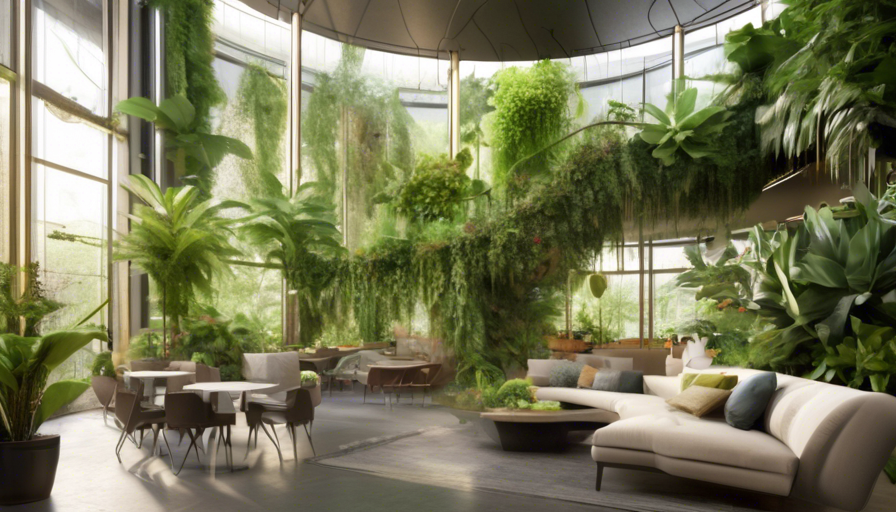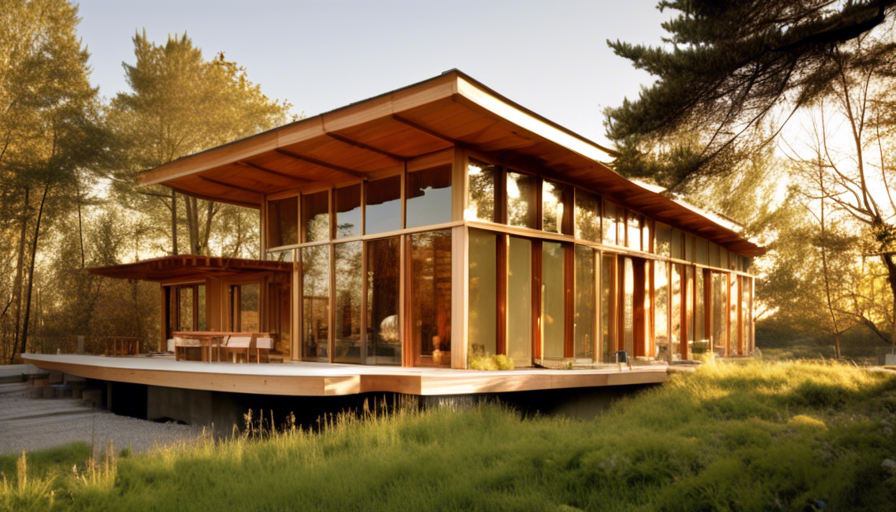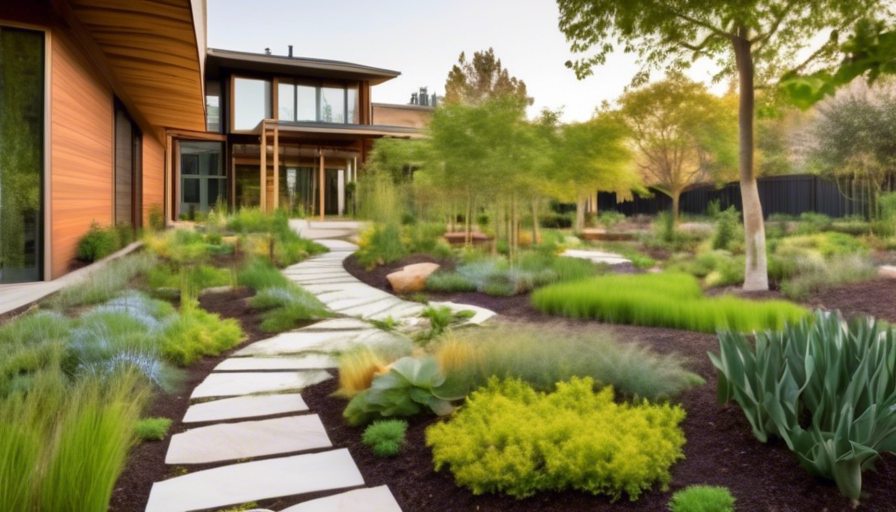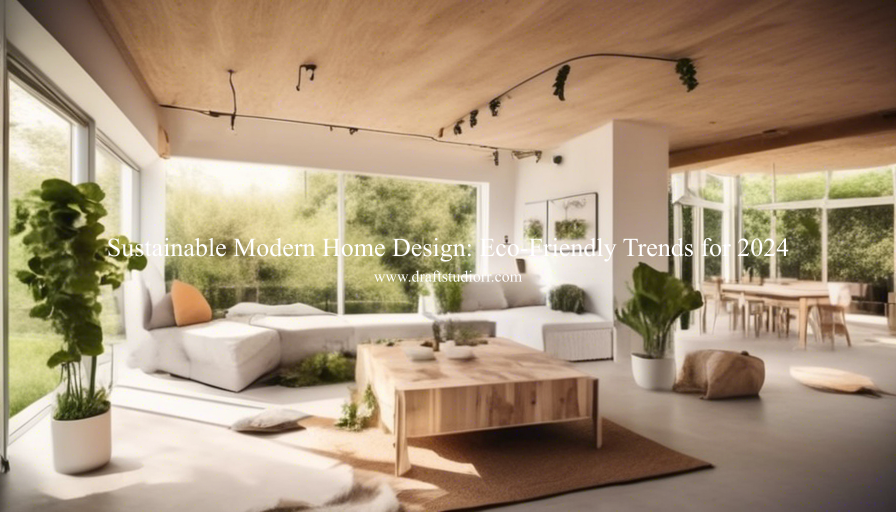Sustainable Modern Home Design: Eco-Friendly Trends for 2024
As awareness of climate change grows, so does the demand for sustainable living practices. This extends to our homes, where design choices can have a significant impact on our environmental footprint. In 2024, sustainable modern home design is experiencing a surge in popularity, with homeowners embracing eco-friendly materials, energy-efficient technologies, and mindful design principles.
The Rise of Biophilic Design

Biophilic design is a movement that integrates nature into the built environment. This trend recognizes the profound connection between humans and the natural world, aiming to improve well-being and reduce stress.
In 2024, biophilic design is taking center stage in sustainable modern homes. Natural materials like wood, bamboo, and stone are favored for their warmth and beauty, while large windows bring in ample natural  light and views. Green roofs, living walls, and indoor gardens create a sense of tranquility and enhance air quality.
light and views. Green roofs, living walls, and indoor gardens create a sense of tranquility and enhance air quality.
Embracing Renewable Energy
Transitioning to renewable energy sources is a critical step towards sustainable living. Solar panels are increasingly common on modern homes, harnessing the power of the sun to generate electricity. Wind turbines, while more suitable for larger properties, are also gaining traction for those seeking complete energy independence.
The integration of renewable energy sources is seamless in contemporary designs, often incorporated into the roofline or facade. Smart home technologies allow for efficient energy management, optimizing solar panel output and minimizing waste.
Prioritizing Energy Efficiency
Beyond renewable energy, sustainable modern homes prioritize energy efficiency through smart design and building materials. Insulated walls and roofs minimize heat loss in the winter and heat gain in the summer, reducing reliance on heating and cooling systems.
High-performance windows with double or triple glazing enhance insulation while maximizing natural light. Energy-efficient appliances and lighting fixtures contribute to lower energy consumption, resulting in reduced utility bills and a smaller carbon footprint.
Water Conservation is Key
Water conservation is another crucial element of sustainable modern homes. Low-flow fixtures in bathrooms and kitchens minimize water usage without compromising functionality. Rainwater harvesting systems collect and store rainwater for irrigation, reducing dependence on municipal water supplies.
Xeriscaping, a landscaping technique that emphasizes drought-tolerant plants, minimizes water requirements for outdoor spaces.
Sustainable Materials: From Local to Recycled
Sustainable modern home design places a strong emphasis on eco-friendly materials. Locally sourced timber reduces transportation emissions and supports local economies. Recycled materials like reclaimed wood and salvaged bricks offer unique character while mini mizing waste.
mizing waste.
Bio-based materials like bamboo and cork are increasingly popular for their sustainability and renewable nature. Bamboo is a rapidly growing resource with exceptional strength, while cork is a natural insulator and sound absorber.
Building with Nature: Passive Design Principles
Passive design principles, inspired by traditional architecture, leverage natural forces like sunlight and ventilation to regulate temperature. South-facing windows maximize solar heat gain in winter, while overhangs and strategically placed trees provide shade in summer.
Cross-ventilation promotes air circulation, reducing reliance on air conditioning. These passive design strategies significantly lower energy consumption and promote a healthier indoor environment.
Embracing Minimalism and Flexibility
Sustainable modern home design often leans towards minimalism, prioritizing functionality over excess. Open floor plans, efficient layouts, and multi-purpose spaces optimize space utilization and reduce the need for excessive building materials.
Modular furniture and adaptable design elements foster flexibility, allowing for easy adjustments as lifestyles evolve. This approach promotes a sense of spaciousness and encourages mindful consumption.
Beyond the Home: Sustainable Landscapes

Sustainable modern homes are not confined to the interior. The landscape plays a vital role in the overall eco-friendly design. Native plant species thrive in local climates, reducing the need for excessive irrigation.
Permeable pavements allow rainwater to seep back into the ground, reducing runoff and preventing flooding. Green roofs and vertical gardens not only enhance aesthetics but also improve air quality and reduce the urban heat island effect.
The Future of Sustainable Modern Home Design
As we face the increasing urgency of climate change, sustainable modern home design will continue to evolve. New technologies and materials will emerge, offering even more innovative ways to minimize environmental impact.
The adoption of sustainable design principles will not only be driven by environmental consciousness but also by economic considerations. Energy-efficient homes offer long-term cost savings, while sustainable materials often appreciate in value over time.
The future of home design is one that seamlessly blends beauty, functionality, and sustainability, creating spaces that are both aesthetically pleasing and environmentally responsible. As more homeowners embrace these principles, we can move towards a future where our homes are not just places to live, but active contributors to a healthier planet.


